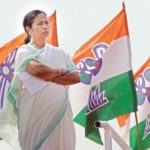SOAS South Asia Institute Scholars on the Indian Elections 2019
West Bengal has a substantial Muslim population: 27.1% according to the 2011 Census of India. Three primary issues are relevant for Muslim minorities in India: (1) Identity (Freedom to practice religion, religious cultural festivals, management of minority institutions etc.), (2) Security (immunity from communal conflicts), and (3) Equity (income, education, employment, health, access to public goods etc.). In November 2006, the Sachar Report showed a dismal picture of the socio-economic conditions of Muslims in West Bengal. The Muslims in Bengal were primarily lagging in education and government jobs. Although the issues of identity and security of Muslims were addressed, the question of equity was ignored in Bengal. In late 2009, the Ranganath Misra Commission Report (initially prepared in 2007) was tabled in the Indian parliament that recommended 10% reservation of seats for Backward Muslims in non-minority educational institutions, and 10% reservation for Backward Muslims in government jobs. West Bengal was the only state to have implemented the Misra Commission recommendation in 2010 when the Left Front government was in power.
In the last few years, the Trinamool-led state government in Bengal has further facilitated that implementation by including more backward castes from both the Hindu and the Muslim communities in the state OBC lists. Thus, the Trinamool led government expanded the OBC-A list (More Backward category having 10% reservation in higher education and jobs) and OBC-B list (Backward class having 7% reservation in higher education and employment). In 2004-05, only 9 Muslim groups were constituting just 2.4% of the total Muslim population in Bengal, who found a place in the state OBC list. By 2017, out of 174 OBC castes, 115 Muslim groups comprising of 90% of the total Muslim population in the state have been enlisted in either OBC-A or OBC-B category. Both OBC-A and OBC-B categories are only meant for reservation for backward castes among both Muslims and Hindus. Upper castes among both Hindus and Muslims cannot avail this opportunity. This expansion of state OBC lists has undoubtedly increased the educational and job opportunities for significant sections of the Muslims. There is a slow and steady improvement of Muslim representation in state government jobs under the Trinamool regime. In the 2006 Sachar Report, the Muslims constitute an average of 3.4% while the staff census report of West Bengal (2016) shows that Muslims now constitute 5.73% of total state government employees, an increase of over 2.3% in one decade.
Along with the relatively peaceful environment of communal harmony in the state, there has also been targeted welfare policies of the Trinamool led government towards the poor and the agricultural sector whose members are none other than significant sections of Dalits, Adivasis and Muslims in Bengal. The political representation of Muslims has also gone up at the ministerial level in the state. As a result, the minority factor behind Trinamool’s consolidation in the state cannot be denied. The trend of increasing support of the Muslims for Trinamool can be noticed in the last decade. According to the CSDS post-poll survey data of 2016, the Trinamool has been able to increase its support among the Muslims from 22% in 2006, 35% in 2011, 40% in 2014 and 51% in 2016. In the ongoing Lok Sabha elections in Bengal, this support of the Muslims for the Trinamool might further increase.
Author: Maidul Islam is Assistant Professor of Political Science at the Centre for Studies in Social Sciences, Calcutta, India and is the author of Indian Muslim(s) after Liberalization (2019) and Limits of Islamism: Jamaat-e-Islami in Contemporary India and Bangladesh (2015).



